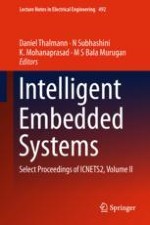This book is a collection of papers from international experts presented at the International Conference on NextGen Electronic Technologies (ICNETS2). ICNETS2 encompassed six symposia covering all aspects of electronics and communications engineering, including relevant nano/micro materials and devices. Highlighting recent research in intelligent embedded systems, the book is a valuable resource for professionals and students working in the core areas of electronics and their applications, especially in signal processing, embedded systems, and networking. The contents of this volume will be of interest to researchers and professionals alike.
